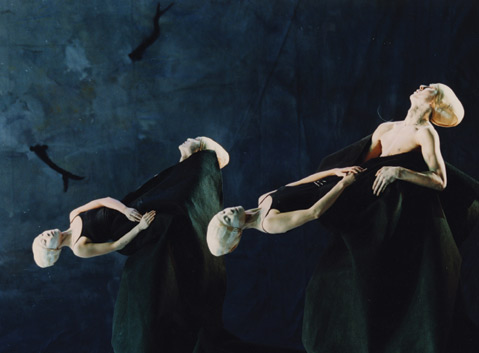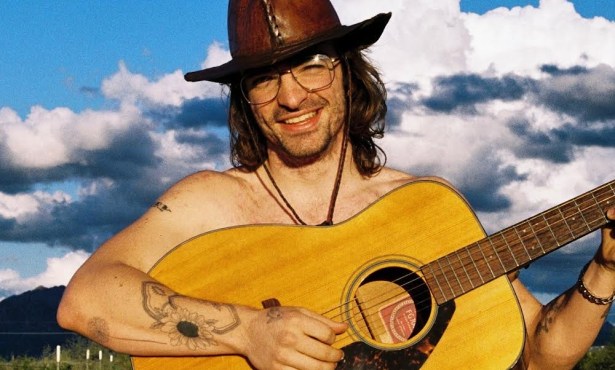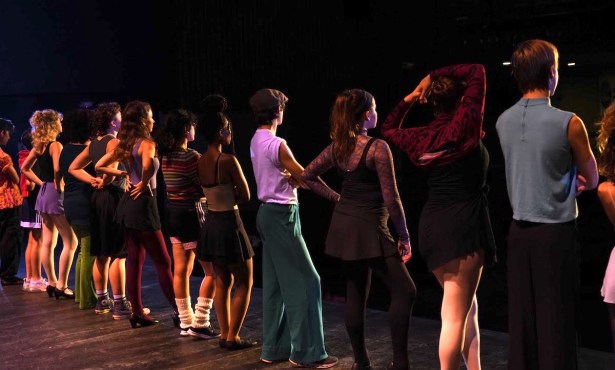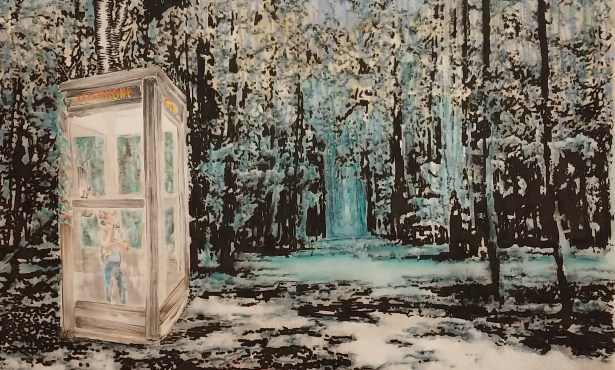Shen Wei Dance Arts at the Granada
New York Company’s S.B. Debut on November 28

Trained from the age of 9 in Chinese painting and calligraphy, contemporary dance choreographer Shen Wei treats the stage like a canvas. For its Santa Barbara debut, his New York-based company performed two works in which he’s at his painterly best. From the startling opening of “Rite of Spring” — performers began to emerge onstage before the house lights dimmed — to the transcendent final image of “Folding” when dancers ascended in near-darkness, Shen Wei pushed his medium right to the edge of the frame, suggesting a world that began before we were made aware of it, and that ends somewhere we can only fathom.
After the premiere of Nijinsky’s iconic and controversial Rite of Spring 100 years ago, Shen Wei’s version echoes the deliberate, scurrying little steps and rigidly held arms. It’s an urgent, carefully balanced composition in which the 12 dancers in subtle grays and blues form parts of a whole the way fish make up a school. Rather than a tidal current, it’s Stravinsky’s moody score that sways them. Sometimes they really are creatures, hands and feet probing the floor, shoulders inwardly rotating, hips and heads waving in the air. When they rose to their feet, they were capable of shocking fluidity — a jerk of the head initiating an unfurling through the spine, down the leg, and out the toe; the whole thing having the beautiful inevitability of a stream of water. This blend of utter specificity and total release is a trademark of Shen Wei’s, and a result of his natural body development technique.
Look carefully, and you’ll notice the stage bears an abstract pattern of crisscrossed streaks of light. Though the movement never ceases in this work, there are brief pauses in the score, and Shen Wei filled these with the sound of sock feet brushing the floor, reinforcing the sense of dancers as paintbrushes.
For “Folding,” as for “Rite of Spring,” Shen Wei has designed both the costumes and set. In this case, the dancers were like dabs of paint in their deep red skirts, their skin smeared with white grease paint, their heads adorned with otherworldly conical headpieces. They swept in from the wings two by two, shuffling their feet so fast they glide across the floor. Set to the ethereal strains of John Tavener and Buddhist chanting, “Folding” felt like an arcane ritual. The dancers were often clustered together, folding from the waist as if in supplication, gazing skyward with hands pressed to chests, or plummeting suddenly to the floor. The evolution of movement was incremental, and riveting. A pendulum swung downstage — a reminder of the ceaselessness of time.



